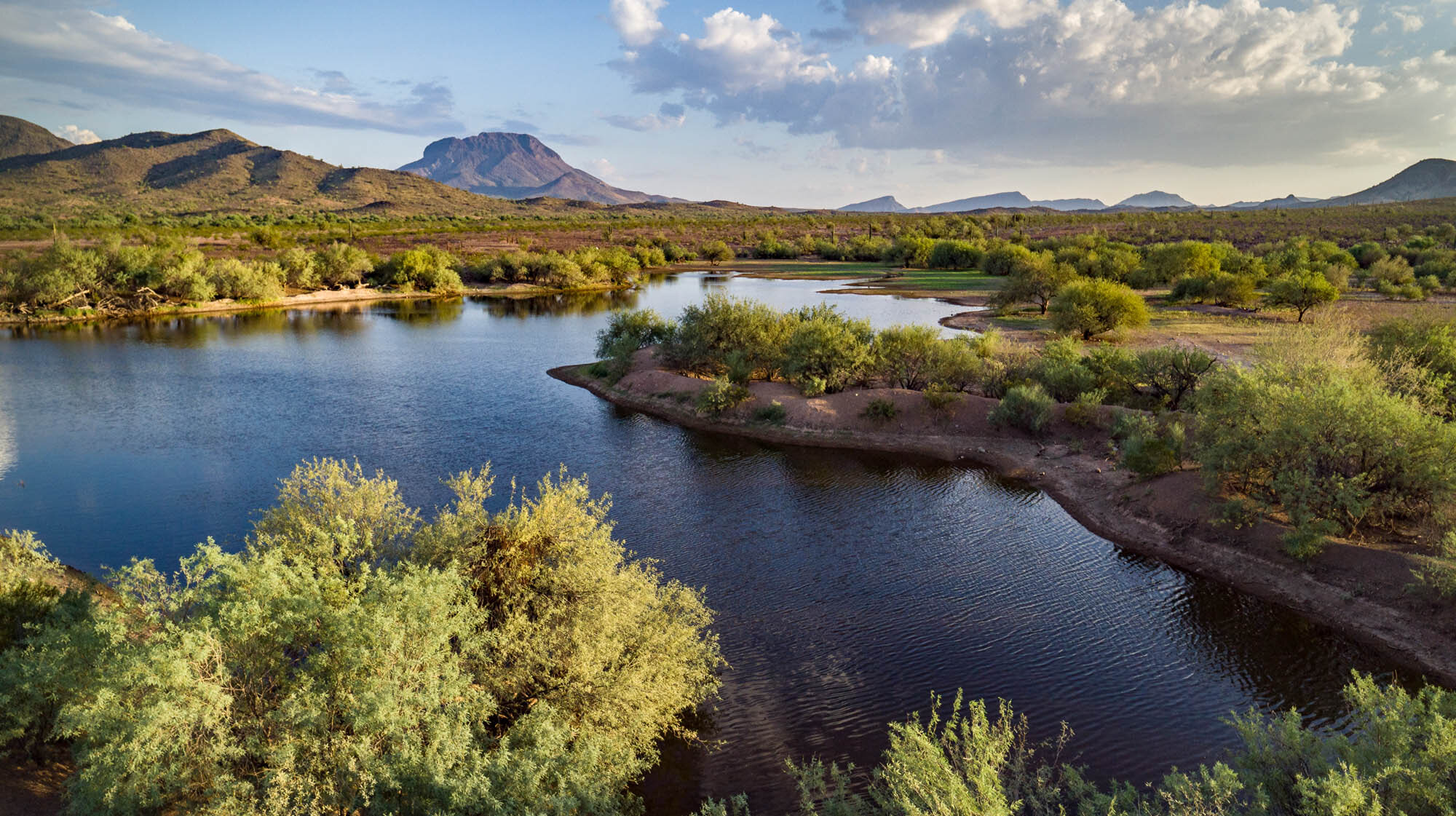Spotlight on the Great Bend of the Gila
February, 2023
By Jason Vaughn
In southwest Arizona, where the Gila River meanders through the jagged mountains and eroded lava flows of the Sonoran Desert, lays one of the more incredible—and largely unprotected—landscapes in North America.
Located roughly halfway between Phoenix and Yuma, the river—a perennial source of surface water in an otherwise parched region—makes a nearly 90-degree turn to flow south to curve around an ancient volcano in an area known as the Great Bend of the Gila.
Here, the Sonoran Desert comes alive—especially in the summer monsoon season when countless species of desert-adapted plants come into bloom. The riparian landscape on the valley floor supports dozens of species of iconic (and endangered) local and migrating desert wildlife including Sonoran pronghorn, Sonoran desert tortoise, desert bighorn sheep, Gila monster, mule deer, javelina, kit fox, ringtail cat, kangaroo rat, and Mojave rattlesnake.
The river and surrounding wetlands also support nearly 200 different species of birds, many of them migratory including ducks, geese, hawks, falcons, hummingbirds, and others.
The Great Bend of the Gila River area has also been an important crossroads and meeting place for Indigenous cultures dating back at least 5,000 years. Thirteen different Tribes have deep cultural connections to this landscape, and the architectural remains of the ancestral Hohokam and Patayan cultures can be found along the river. An estimated 10,000 petroglyph sites—including many spectacular rock panels—have been identified in the area.
But even in the best of circumstances, life in a desert environment can be a tenuous proposition. Today, virtually unchecked urban sprawl from Phoenix brings with it the constant threat of residential and business development. The area is often victim to vandalism and theft of cultural resources, the destruction of delicate cryptobiotic desert soils by off-road vehicles, and the introduction of invasive plant species like tamarisk (“Salt cedar”). The Great Bend is also threatened by mineral extraction and exploitation, and industrial energy development.
These threats alone would be bad enough—but a now hotter and drier climate has made a difficult situation much worse.
There is hope, though. There is a growing movement to ask the White House to declare the area to be a national monument under the Antiquities Act. And last August, Rep. Raúl Grijalva (D, AZ-3) introduced the Great Bend of the Gila Conservation Act (HR 8719) which would permanently set aside nearly 377,000 acres of Bureau of Land Management land “to conserve, protect, and enhance for the benefit and enjoyment of present and future generations the Indigenous ancestral, archaeological, cultural, historic, geologic, hydrologic, natural, recreational, educational, and scenic resources.” In addition, the bill would identify areas that would be off-limits to vehicles, and prohibit the construction of new roads.
The proposed legislation would also require the Department of Interior to consult with Tribal governments on land management plans, including creating a Tribal commission to provide guidance on a conservation management plan.
Like so many other pieces of important conservation and environmental legislation currently languishing in Congress, the chances of this bill passing appear to be low. But the threats to places like Great Bend of the Gila don’t stop just because Congress refuses to act.
Contact your Congressional representatives today to ask them to step up for HR 8719, so that this special oasis of life in the desert can keep on blooming for generations to come.
For more information on protecting the Great Bend of the Gila, check out https://www.respectgreatbend.org


